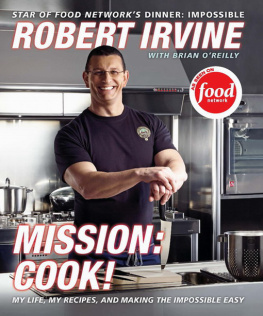Copyright 2017 by James Edwards
Photographs 2017 by Ted Axelrod
All rights reserved. No part of this book may be reproduced in any manner without the express written consent of the publisher, except in the case of brief excerpts in critical reviews or articles. All inquiries should be addressed to Skyhorse Publishing, 307 West 36th Street, 11th Floor, New York, NY 10018.
Skyhorse Publishing books may be purchased in bulk at special discounts for sales promotion, corporate gifts, fund-raising, or educational purposes. Special editions can also be created to specifications. For details, contact the Special Sales Department, Skyhorse Publishing, 307 West 36th Street, 11th Floor, New York, NY 10018 or .
Skyhorse and Skyhorse Publishing are registered trademarks of Skyhorse Publishing, Inc., a Delaware corporation.
Visit our website at www.skyhorsepublishing.com .
10 9 8 7 6 5 4 3 2 1
Library of Congress Cataloging-in-Publication Data is available on file.
Cover design by Jane Sheppard
Cover image: iStockphoto
Print ISBN: 978-1-5107-1165-5
Ebook ISBN: 978-1-5107-1166-2
Printed in China
CONTENTS
This book is dedicated to my grandmother, Lucy Oliveri, who opened my eyes to the exciting world of food and cooking when I was a young boy. Grandma cooked everything from scratch with ingredients that she grew and raised herself; she had fruit trees and a massive vegetable garden. Produce that was not used during the season was canned for use during the winter. She raised chickens, turkeys, and a pig each year. In the mornings, my siblings and I would go into the hen house to fight the mother hens over their eggs. She did all that without using recipes, and she was the best from-scratch cook I have ever known.

PART ONE
SETTING UP YOUR KITCHEN AND PANTRY

CHAPTER ONE
Sanitation, Food Safety, and Labels
Basics of Staying Safe
While cooking can be a truly rewarding experience, there are certain hazards that are inherent to the process. Anyone who spends time in the kitchen must have a working knowledge of these hazards in order to ensure their own safety and the safety of those they are cooking for. Some of these hazards are apparent and others are not. We will explore both in order to enhance your awareness and make your cooking experience a safe and rewarding one.
The two most obvious hazards in the kitchen are cutting and burning hazards. These are largely hazardous to the cook and not the guests. In a commercial kitchen, chefs and cooks protect themselves from these types of hazards by first wearing the proper clothing. Long pants and closed-toe shoes (not sandals) will afford the cook an added layer of protection in case a knife is dropped or hot liquid is spilled. Since the home cook is in it for the fun of it, these guidelines may or may not apply but they are worth mentioning in the context of personal protection.
Protection against burning also includes the use of temperature resistant pot holders when handling hot pots and pans. When moving hot pans in and out of the oven, oven mitts with a high rf or insulation factor will afford maximum protection. These should ideally cover as much of the arm as possible. Many of the worst burns occur when the back of the hand or the arm comes in contact with an oven rack that is above the item you are working with. Never use a wet oven mitt, towel, or pot holder to handle hot pans. The steam generated from the contact with the pan can cause serious burns. Some mitts and pot holders, such as silicone coated varieties are resistant to heat and spills, which means that hot oil or water that comes in contact with the mitt will not be absorbed, avoiding a burn. No matter how careful you are, occasionally all cooks suffer burns. When this happens, the affected area should be immediately cooled with ice to suppress the burn.
A sharp knife is perhaps the tool that is most frequently used in the kitchen. Knives are not, however, the only potential cutting hazard. Other devices like mandolines can also pose a risk to the operator, especially if they are not properly protected.















